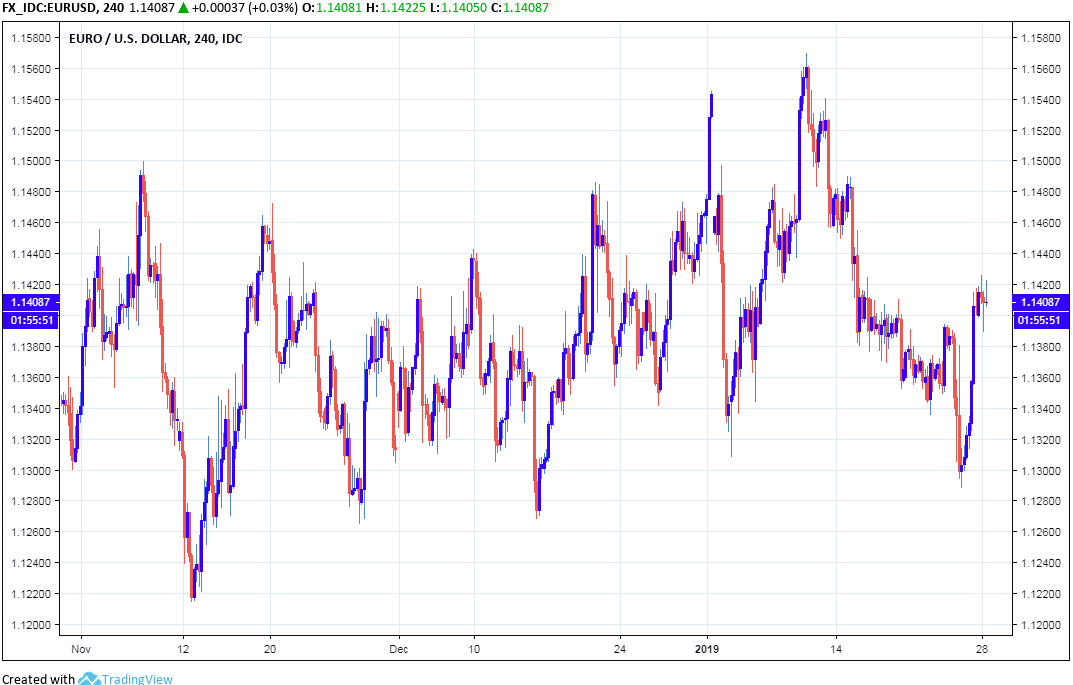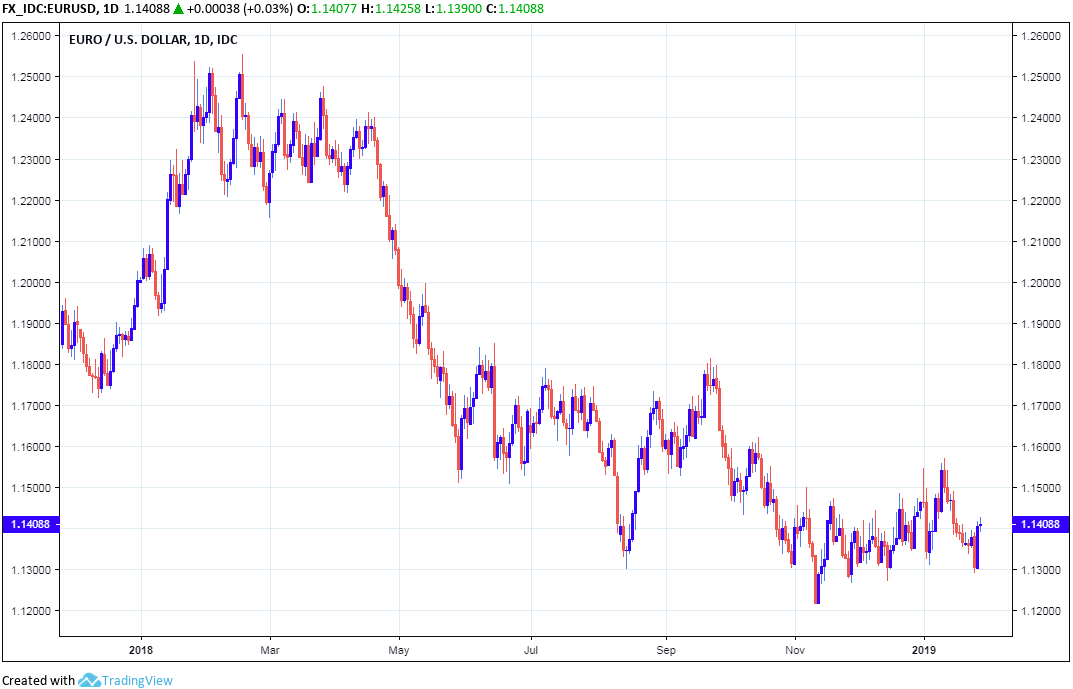Euro-to-Dollar Rate: Morgan Stanley Walks Away but Commerzbank Still a Buyer
- Written by: James Skinner
-

© Rawpixel.com, Adobe Stock
- Morgan Stanley walks away from EURUSD after poor 2019 start.
- Says will revisit single currency at more "opportune" time in 2019.
- But Commerzbank is still a buyer, looking for gains up to 1.1550.
The Euro-to-Dollar rate is still set for gains this year, according to most accounts of how 2019 is likely to play out, but a worsening economic backdrop and lacklustre performance so far in January has already seen some buyers give up on the single currency.
Analysts at global investment bank Morgan Stanley are now looking to get out of an earlier bet that the exchange rate would rise steadily over the course of 2019.
They say they're still looking for a good performance from the Euro this year but that they will revisit the single currency at a later date rather than continue to hold it in the portfolio.
"We look to close our EURUSD long for now. While we maintain that EURUSD is likely to rise over time as European and Chinese data rebound and US data continue to worsen, we look to reenter at a more opportune time," says Hans Redeker, head of FX strategy at Morgan Stanley, in a note to clients Monday.
Morgan Stanley told clients on January 02 that they should buy the Euro-to-Dollar rate around 1.1465 and target a move up to 1.18 over the coming months. But a series of adverse economic reports have since pushed the currency as low as 1.1288 and dented the short-term outlook.
The Euro is now among the worst performing G10 currencies, having declined against all its major developed world rivals this year barring the Swiss Franc and Swedish Krona. It is down -0.46% against the Dollar for 2019 and by -3.5% against Pound Sterling.

Above: Euro-to-Dollar rate shown at 4-hour intervals.
Activity in the French and German manufacturing sectors has fallen over the edge of a cliff in recent months due to an economic slowdown in China, uncertainty overthe Brexit process and disruption caused by the implementation of EU rules on testing the emissions output of cars.
This has left the German economy teetering on the edge of recession and stoked fears of a slowdown elsewhere in the Euro area. Italy is already thought to be in recession and other economies in the bloc are yet to make up for weakness in the core member states.
This already led the European Central Bank (ECB) to hint last week that it could delay the timing of its first interest rate rise, pushing it back from late 2019 into the 2020 year. And now Morgan Stanley is abandoning the single currency just as the market waits on final quarter GDP data due out this week, alongside inflation data for January.
"The ECB emphasizing downside risks to the economic outlook may limit EUR upside for now, leaving us to turn more neutral. However, we maintain that European data are likely to stabilize and eventually rebound. Global factors like a Chinese recovery in Q2, supporting CNY and risk appetite, may also support the EUR," Redeker warns.
GDP data released on Thursday and inflation statistics due out Friday could ultimately reinforce the market's view that a European Central Bank interest rate rise, from current record low levels, is moving further off into the future.
That would prevent the Euro from rising out of the range that has confined the Euro-to-Dollar rate in recent months for a while yet. However, and while fundamental analysts are cashing up and walking away, some technical strategists are still buyers of the single currency.

Above: Euro-to-Dollar rate shown at daily intervals.
"Last week we saw EUR/USD sell off to the 2016-2019 uptrend that currently lies at 1.1289," says Karen Jones, head of technical analysis at Commerzbank. "We have additional support offered by the 1.1267/70 November and December lows. Provided that the market holds here we favour a recovery to the 1.1573 200 day moving average and the 1.1623 mid October high."
Jones and the Commerzbank team recently bought the exchange rate at 1.1325 and are now looking to hold onto their "long" trade until the market reaches the 1.1550 threshold, at which point they say they will exit the trade.
The ECB needs economic growth to be sufficient enough for it to lift the consumer price index and core inflation back toward the target of "close to but below 2%", if it is to be able to justify raising interest rates. That's what the currency market wants to see.
But core inflation is currently at just 1%, unchanged from it's January 2016 levels and only 0.4% higher than it was in January 2015 when the ECB was planning a record amount of economic stimulus designed to lift consumer prices.
Changes in interest rates are only normally made in response to movements in inflation but impact currencies because of the push and pull impact they have on capital flows. Rising rates are positive for a currency and vice versa.
The market knows all too well the ECB will not be able to raise its interest rate any time soon so what will matter most for the Euro over the coming months is whether economic data for the first quarter points to a more protracted slowdown that further delays an initial rate rise, or if it signals that an economic recovery is in the pipeline.
Analysts at Bank of America Merrill Lynch said last week they expect poor economic data could soon push the Euro-to-Dollar rate below 1.10 but that a pick-up in the economy will become clear in the second half of the year, and that this should fuel a recovery to 1.25 before year-end.
Time to move your money? Get 3-5% more currency than your bank would offer by using the services of foreign exchange specialists at RationalFX. A specialist broker can deliver you an exchange rate closer to the real market rate, thereby saving you substantial quantities of currency. Find out more here.





